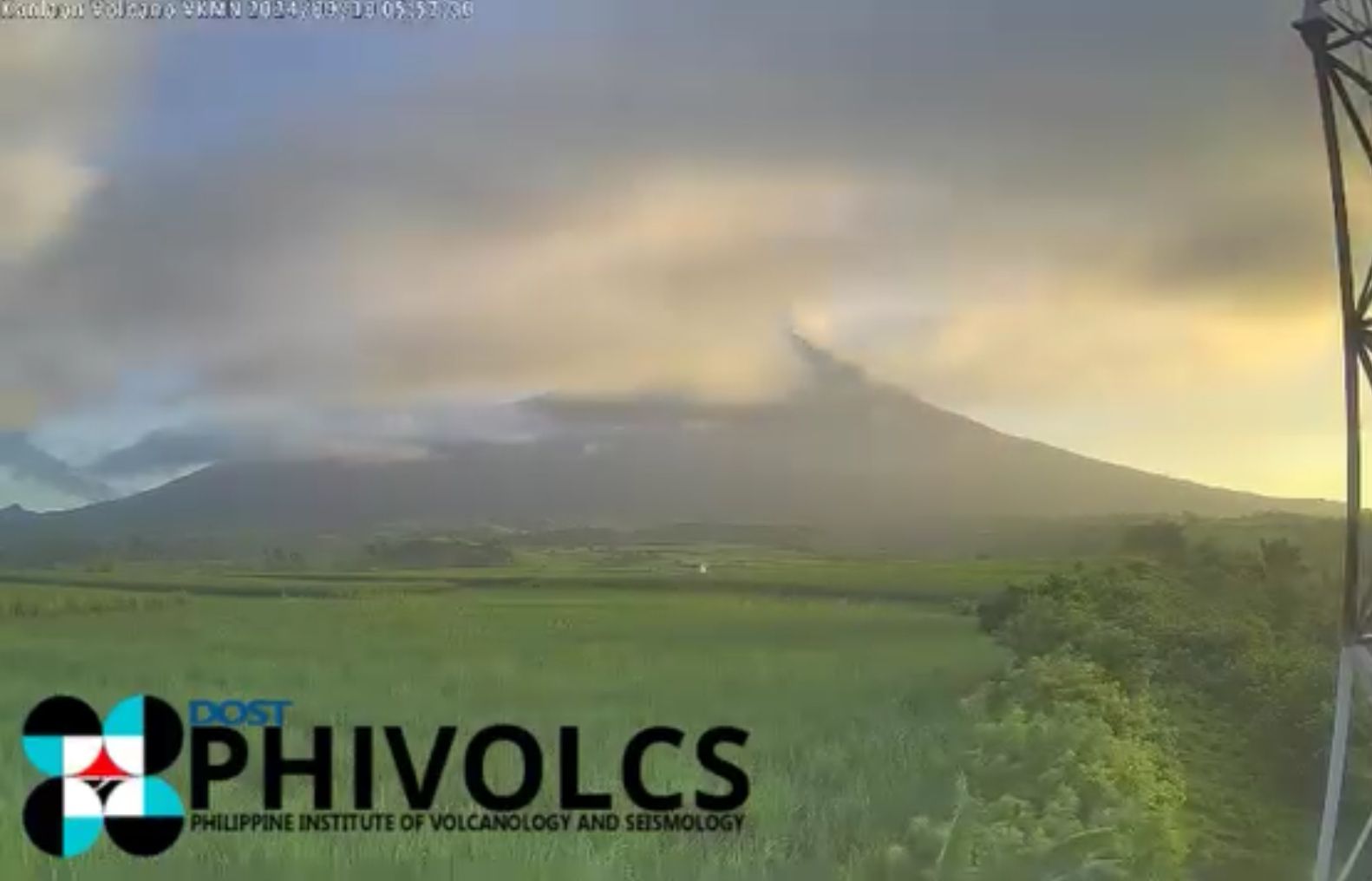'Sulfuric fumes' from Kanlaon Volcano continue to spread across Negros Island communities
At A Glance
- Phivolcs continues to warn communities near Kanlaon Volcano to take precautionary measures against prolonged exposure to volcanic SO2.
- Communities living near river systems on the southern and western slopes of Kanlaon Volcano, especially those previously affected by lahars and muddy streamflows, are also advised to take precautionary measures if heavy rainfall is anticipated or begins.

The Philippine Institute of Volcanology and Seismology (Phivolcs) on Wednesday, Sept. 11 warned that sulfuric fumes from Kanlaon Volcano are still spreading across communities in Negros Occidental and Negros Oriental, with volcanic emissions hitting record-high levels anew.
In a notice issued at 7 p.m., Phivolcs reported that sulfur dioxide (SO2) emission from the summit crater of Kanlaon reached 11,556 tons on Wednesday, up from 9,985 tons the previous day.
“This is the highest emission from the volcano recorded since instrumental gas monitoring began,” it pointed out.
Due to continuous degassing activity, sulfuric fumes have been reported in the following areas—Brgy. San Miguel in La Carlota City, Brgy. Masulog and Brgy. Pula in Canlaon City, Brgy. Codcod in San Carlos City, and Brgy. Inolingan in Moises Padilla.
Phivolcs said Kanlaon has been emitting increased concentrations of volcanic SO2 this year, averaging 1,273 tons per day before the June 3 eruption.
Since then, emissions have been particularly elevated, with an average of 3,565 tons daily.
Health hazards, precautions
Phivolcs continues to warn communities near Kanlaon Volcano to take precautionary measures against prolonged exposure to volcanic SO2.
Communities within the direct path of sulfur dioxide plumes, especially during low wind conditions, may experience irritation of the eyes, throat, and respiratory tract.
Those particularly sensitive to these conditions include individuals with asthma, lung disease, or heart disease, as well as the elderly, pregnant women, and children.
Communities that are affected by volcanic SO2 are advised to take certain precautions.
Exposure should be minimized by avoiding outdoor activities, staying indoors, and keeping doors and windows closed to block volcanic gas.
Individuals should protect themselves by wearing an N95 mask and drinking plenty of water to alleviate throat irritation.
Those in sensitive groups, including people with asthma, lung disease, heart disease, the elderly, pregnant women, and children, should monitor their health closely and seek medical attention from a doctor or barangay health unit if severe symptoms occur.
In the event of ash fall affecting communities downwind of Kanlaon Volcano's crater, Phivolcs said individuals should cover their noses and mouths with a damp, clean cloth or dust mask.
Civil aviation authorities are also asked to advise pilots to steer clear of the volcano summit to avoid hazards from ash and volcanic fragments.
Likewise, communities living near river systems on the southern and western slopes, especially those previously affected by lahars and muddy streamflows, are advised to take precautionary measures if heavy rainfall is anticipated or begins.
Alert status
Phivolcs reminded the public that Alert Level 2 (increasing unrest) is currently in effect for Kanlaon Volcano.
However, the ongoing seismic activity raises the possibility of further unrest and a potential upgrade in the alert level, it added.
On Sept. 9, Phivolcs warned that the increasing volcanic unrest could be a precursor to eruptive events.
Residents are advised to remain vigilant and avoid entering the four-kilometer-radius permanent danger zone to minimize risks from volcanic hazards such as pyroclastic density currents, ballistic projectiles, and rockfalls.